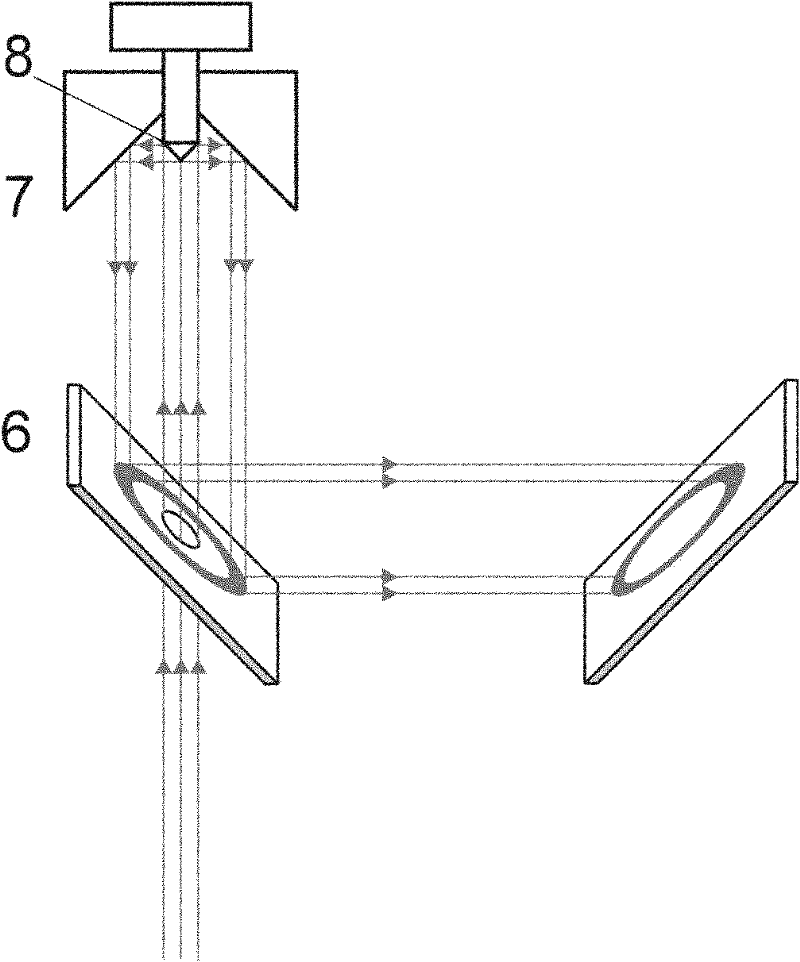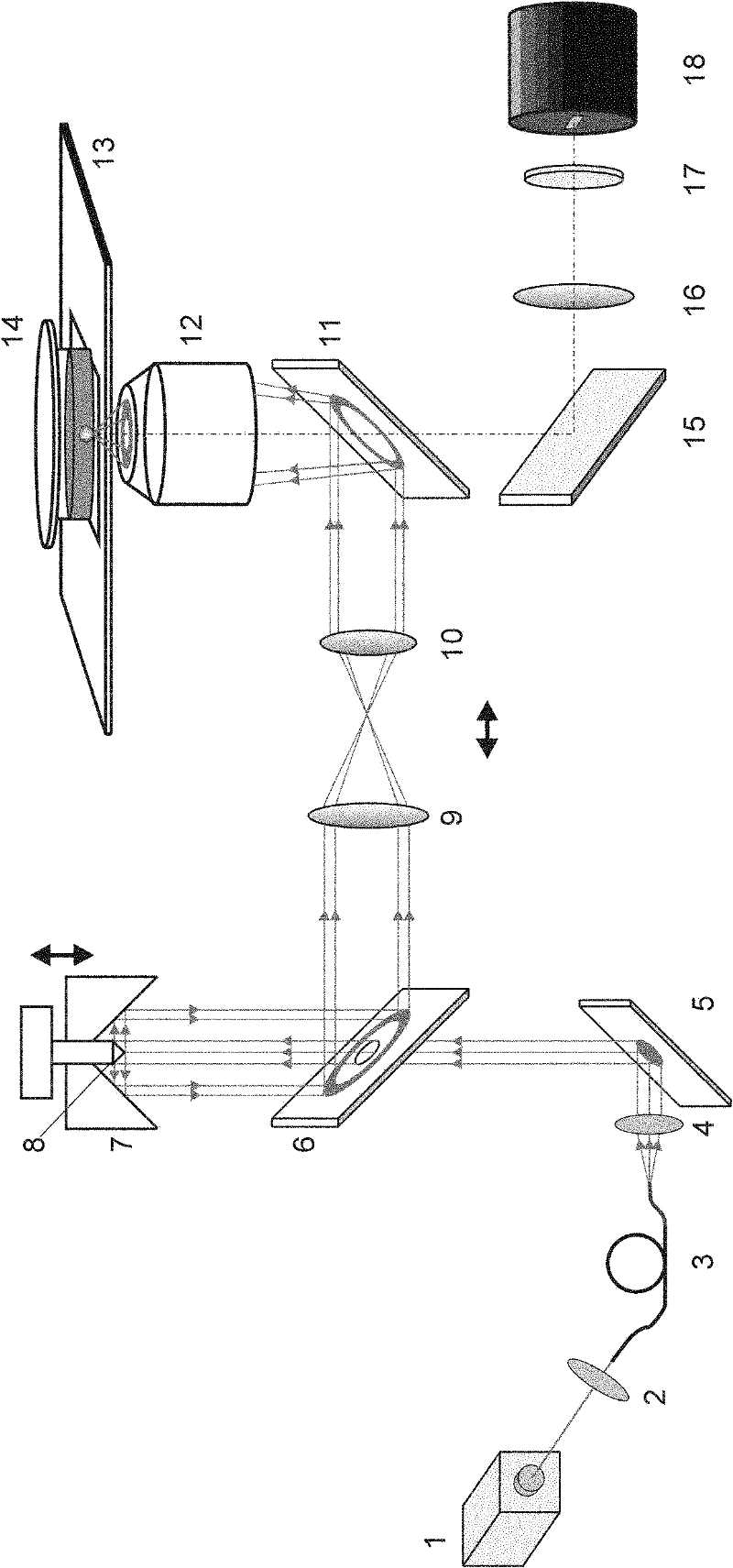System and method for realizing total internal reflection fluorescence microscopy by using concentric double conical surface lens
A total internal reflection, biconical surface technology, used in microscopy, fluorescence/phosphorescence, optics, etc., can solve problems such as low transmittance, and achieve the effect of weak light damage, weak light bleaching, and convenient switching.
- Summary
- Abstract
- Description
- Claims
- Application Information
AI Technical Summary
Problems solved by technology
Method used
Image
Examples
Embodiment 1
[0051] Example 1: Figure 4 The apparatus of the present invention compares the imaging experiments of wide-field fluorescence microscopy and total internal reflection fluorescence microscopy on fluorescent beads with a diameter of 1 μm. The scale is 10 μm, the microscopic objective lens in the experiment is 63X, NA=1.4, and the laser is frequency-doubled YAG laser with a wavelength of 532nm. During the experiment, adjusting the relative position of the convex axicon 8 in the concave axicon 7 can realize the switching between the total internal reflection fluorescence microscope and the wide-field fluorescence microscope. Figure 4 (a) is a wide-field fluorescence microscope image, where the background noise caused by the fluorescent beads at the out-of-focus position can be seen. Figure 4 (b) is a total internal reflection fluorescence microscope image, only the fluorescent spheres at the focal plane can be seen, and the contrast is very high.
Embodiment 2
[0052] Example 2: Figure 5 The apparatus of the present invention compares the imaging experiments of wide-field fluorescence microscopy and total internal reflection fluorescence microscopy on lily of the valley slices. The scale is 10 μm, the microscopic objective lens in the experiment is 100X, NA=1.45, and the laser is frequency-doubled YAG laser with a wavelength of 532nm. During the experiment, adjusting the relative position of the convex axicon 8 in the concave axicon 7 can realize the switching between the total internal reflection fluorescence microscope and the wide-field fluorescence microscope. Figure 4 (a) is a wide-field fluorescence microscopy image, where the autofluorescence of the sample at the out-of-focus position can be seen. Figure 4 (b) is a total internal reflection fluorescence microscope image, only the fluorescence signal at the interface can be seen, and the image contrast is very high.
PUM
| Property | Measurement | Unit |
|---|---|---|
| refractive index | aaaaa | aaaaa |
Abstract
Description
Claims
Application Information
 Login to View More
Login to View More - R&D
- Intellectual Property
- Life Sciences
- Materials
- Tech Scout
- Unparalleled Data Quality
- Higher Quality Content
- 60% Fewer Hallucinations
Browse by: Latest US Patents, China's latest patents, Technical Efficacy Thesaurus, Application Domain, Technology Topic, Popular Technical Reports.
© 2025 PatSnap. All rights reserved.Legal|Privacy policy|Modern Slavery Act Transparency Statement|Sitemap|About US| Contact US: help@patsnap.com



